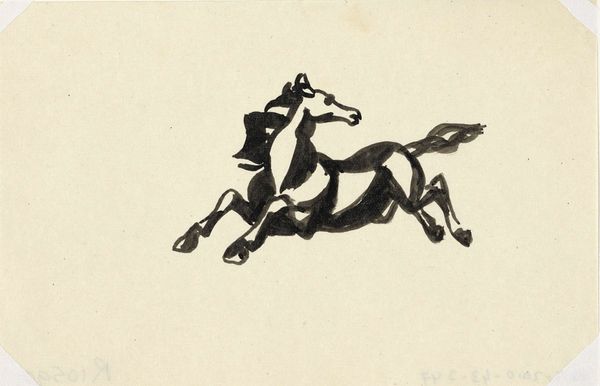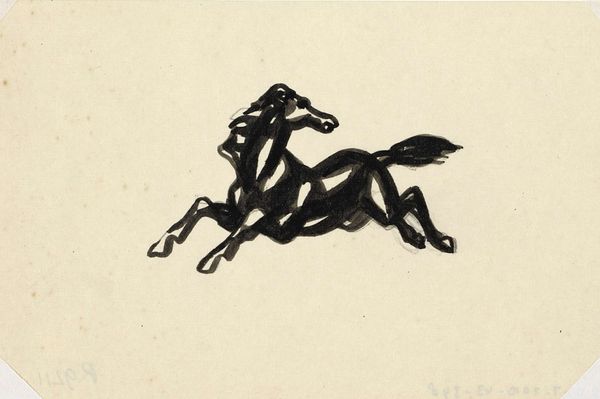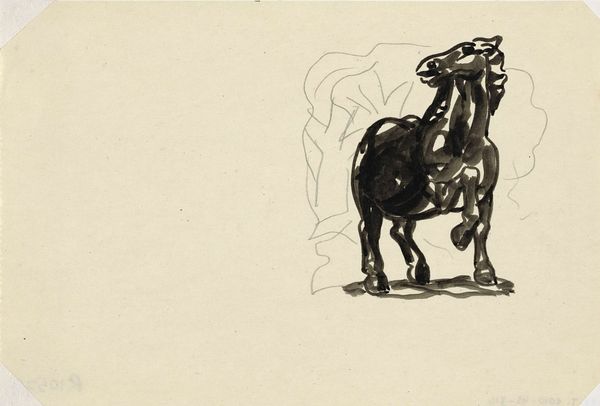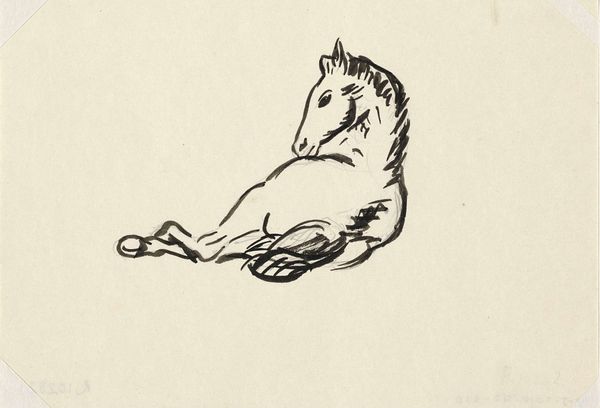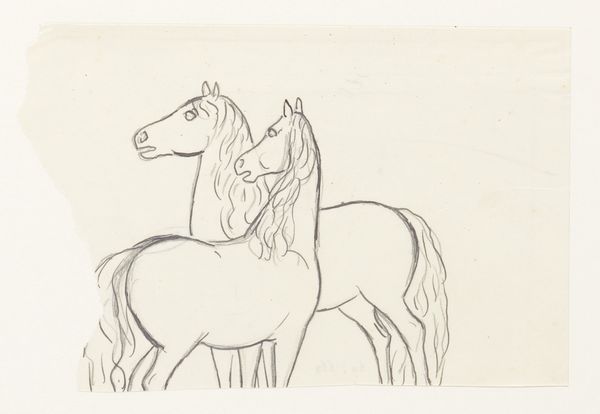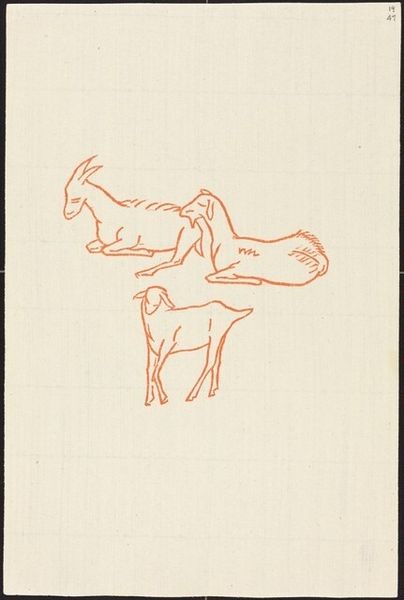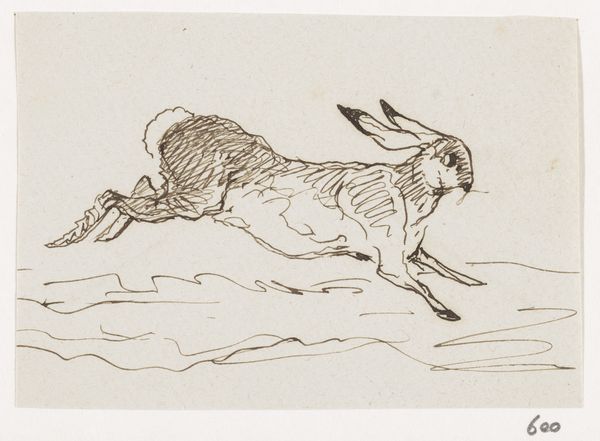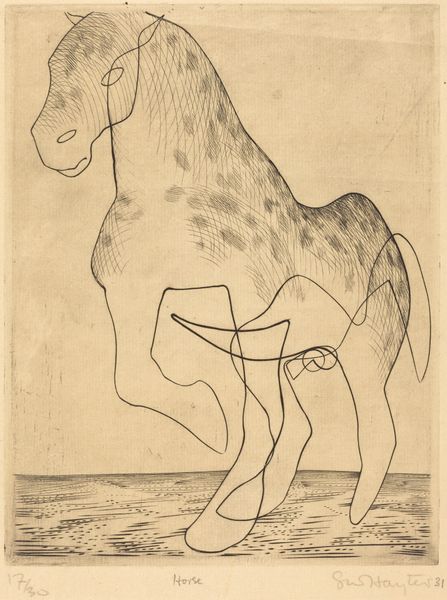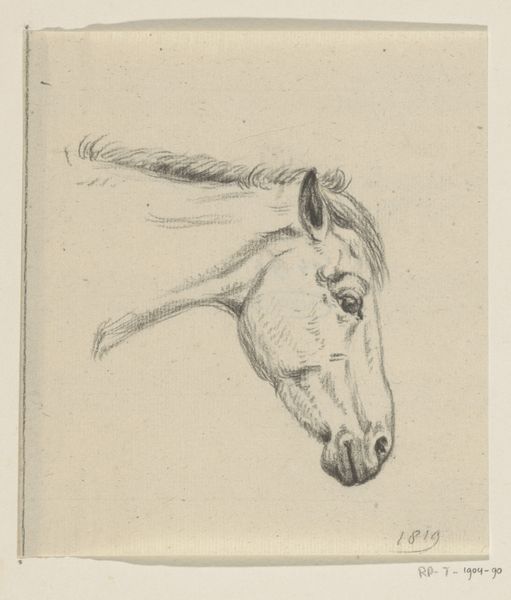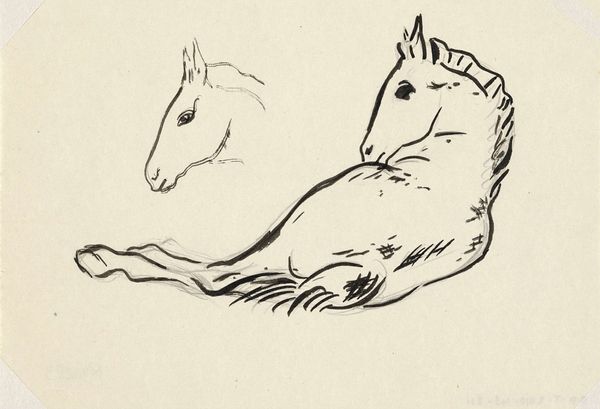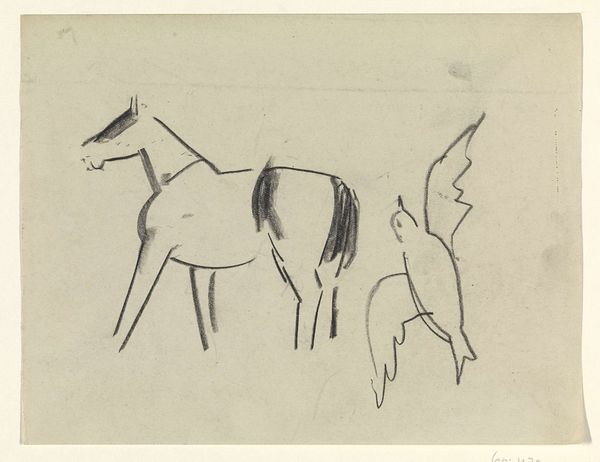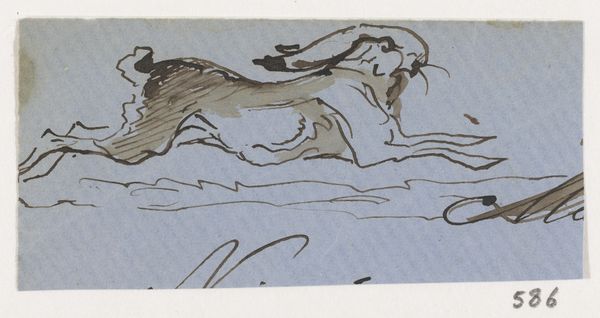
drawing, paper, ink
#
drawing
#
figuration
#
paper
#
ink
#
horse
#
line
Dimensions: height 100 mm, width 155 mm
Copyright: Rijks Museum: Open Domain
Curator: Welcome. Before us is Leo Gestel’s "Springend paard", or "Jumping Horse," a 1937 drawing rendered in ink on paper, currently held here at the Rijksmuseum. What strikes you immediately? Editor: The energy. It’s captured mid-leap, all kinetic energy. The minimalist lines against the stark paper create a feeling of lightness, like it could bound right off the page. Curator: It's fascinating how Gestel distilled such powerful movement with such sparse linework. Gestel's earlier work was characterized by a much stronger Cubist and Expressionist vocabulary. This drawing signals a departure from abstraction towards figuration, but one tinged with modern aesthetics, and he was part of movements that changed art history, specifically post-impressionism and cubism in the Netherlands. Editor: I find myself wondering what brought about this shift. What historical currents might have influenced Gestel’s evolving artistic trajectory? There's a feeling of... perhaps even escapism in the depiction of this unbridled freedom, particularly given the social and political context of Europe in 1937, amidst growing authoritarianism and impending war. Curator: That’s insightful. We see a turn in the 1930s towards accessible imagery. While pure abstraction still held sway among avant-garde circles, there was pressure, implicit and sometimes explicit, from nationalistic groups that promoted an art rooted in realism and tradition, not for complexity. The simplification could be read as a move towards more relatable art, a strategy maybe. Editor: So, perhaps this seemingly simple image carries within it a quiet resistance or navigation of those complex power dynamics. How do you interpret Gestel's choice to isolate the horse, devoid of background or setting? Curator: Isolation enhances focus on form, and suggests the subject becomes symbolic beyond just “horse.” Think about its use as a symbol. Horse could represent freedom, strength, vitality. The choice of subject matter would have held immense significance during those tense times. Editor: Ultimately, Gestel gives us more than just a horse. This artwork urges us to confront freedom, a subject just as pressing then as it is today. Curator: Indeed, an exercise in considering art, the political landscapes they echo, and their subtle commentaries about the world.
Comments
No comments
Be the first to comment and join the conversation on the ultimate creative platform.
